Basic Network
Computer Networks
The computer network is a connection between two or more devices, which
are connected physically and logically so they can exchange
information.
Computer networks can be said to be connected if the device is in the
network can exchange data / information and share the resources owned.
Benefits of Computer Network
There are several reasons why we need to build a computer network. This consideration also the benefits of a computer network.
Resource Sharing
With the computer network, resource sharing can be performed without distance constraints. Resource sharing include:
- Data Sharing, with our computer network can easily share data such as documents, images, videos, etc. with colleagues in remote locations and even in different countries.
- Sharing hardware, if the printer was once a computer, computer network, the printer can be used by multiple computers at once. Not just a printer, we can share a lot of storage and other hardware.
- Internet Access Sharing, a small computer network allows multiple computers to share one Internet connection. Special device such as a router, has the ability to allocate bandiwdth easily computer users need.
Connectivity and Communication
Individuals in a building or a workgroup can be connected in a LAN network. Some LAN to remote locations connected into the WAN network.
When the network is formed and connected, then the communication
between the user could happen, for example, by using e-mail technology.
Data Security and Management
In the business world, the network makes it easy for administrators to perform essential data management company better.
Instead of this important data is on each computer device data
management employees can be done at random, will be safer and easier
when the data is stored centrally by using Shared Server. In this way, employees of the company easier to find the data.
Administrators can also ensure that data is backed up on a regular
basis, and makes it possible to implement security in a way to determine
who is allowed to read or write data that is important.
Performance Enhancement and Balancing
Under certain conditions a network can be used to improve the
performance of some applications by means of distributing computing
tasks on multiple computers on the network.
Entertainment
Computer networks, especially the Internet, usually provide many types of entertainment and games. Such as multi-player games that can be played by several users at the same time, or just watching the video.
Disadvantages of Computer Networks
Cost of Network Hardware, Software and Setup
computer networks are not formed just like that, make sure the computer
network requires hardware and software investments, planning, network
design, and network implementation.
Cost Management Hardware / Software and Administration
Computer networks require care and regular maintenance by IT professionals.
Unwanted Sharing
Besides the ease of sharing information, there is a risk that the virus
infected files be shared computers, so that it can be easily spread.
Illegal behavior or Unwanted
Similar to the previous point, the computer network makes it easy to
communicate, but carries other risks, such as taking or producing
illegal content, piracy, etc..
Data Security Concerns
on a computer network that is implemented properly, data security can be maintained. Conversely, if the implementation is impressed abroad - random, then the existing data in the network are also in danger. Possible hacker attacks, sabotae, or risky enough is an attempt to steal important company documents.
Types of Computer Networks
Bersadarkan Transmission Type
In studying the types of computer networks, there are some VERY important classification transmission technology and distance. In theory, computer networks and transmission divided by the distance. There are two types of network based transmission technology, which is the network broadcast and point-to-point.
- Broadcast networks have a single communication channel that is shared by all devices connected to the network. Small messages, called packets, which are transmitted by a machine will be accepted by the other machines. The address field of a packet containing information about to whom the package is addressed. When receiving a packet, the machine checks the address field. When the charter package addressed to him, then the engine will process the packet, if the packet is intended for other machines, the machine will ignore the charter.
- Network Point-to-Point connection consists of several pairs of individuals, from one device to the other device. To send a packet from a source to a destination, a packet on the network of this kind may have to go through one or more intermediaries machines. Often have to go through a lot of different possible route distance. Because the algorithm route plays an important role in the network of point-to-point.
In general, smaller networks and geographically localized cendurung wear broadcasting, whereas larger network using point-to-point.
Based Geographic
Another alternative within the classification of a network is based on the geographical scope of a network. LAN, MAN, WAN, and the Internet can be regarded as a true network, meaning that computers bekomunikasi by way of exchange of data / messages over a longer cable.
- Local Area Network (LAN)
Local Area Network (LAN) can be defined as a collection of computers
that are linked together in a particular area that is not as extensive,
as in an office or building. LAN can also be defined based on the use of the computer's IP address on the network.
A host computer or LAN can be said when one has an IP address that is
in a network address, so that it does not require a router to
communicate. LAN network can also be divided into two types, namely peer-to-peer and client-server networks. In peer-to-peer network, each computer connected to act as either a workstation or a server, while the client-server network, only one computer acting as a server and the other computer as a workstation.
- Metropolitan Area Network (MAN)
- Wide Area Network (WAN)
- Internet
Metropolitan Area Network (MAN) is basically a LAN version is larger and usually wear the same technology as the LAN. MAN can include corporate offices are adjacent and can be used for private purposes (private) or public.
The main reason to separate the MAN as a special category is
already-determined standard for MAN, and these standards are now being
implemented. The standard is called DQDB (Distributed Queue Dual Bus) or according to the standard IEEE 802.6, DQDB consists of two unidirectional wires where all the computers are connected. Each bus has a head-end device to start transmitting activity.
Wide Area Network (WAN) is a computer network covering a wide geographical area, often include a country or continent.
Internet (short for interconnection-networking) is a whole network of
computers connected together using a standard global system Transmission
Control Protocol / Internet Protocol Suite (TCP / IP) as the packet
exchange protocol (packet switching communication protocol) to serve billions of users around the world, even between planets.
Wireless Network
Also called the wireless network, is almost the same as does the cable network, only connections between hosts no longer use the cable medium. Usually wireless networks to connect one computer system to another system by using some kind of wireless transmission medium, such as radio waves, microwaves, or infrared light.
Topology is a way to connect one computer to other computers to form a network. There are several topologies commonly used today, the bus topology, token-ring, star, tree, and mesh.
Bus Topology
In bus topology used a single cable or cable in the center where the entire workstations and servers connected. The advantages of a bus topology is the development of a network or adding new workstations can be done easily without disturbing other workstations. The drawback of this topology is that if there is interference in the cable along the center of the whole network will be impaired.
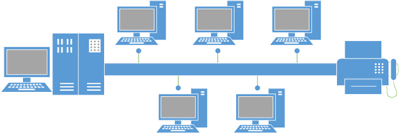 Ring Topology
Ring Topology
In ring topology, all workstations and servers are connected to form a loop or ring pattern. Each workstation or server will receive and pass information from one computer to another, if the addresses match then the information is received and when the information is not to be missed. Weakness of this topology is each node in the network will always follow and manage the information that is passed in the network, so that when there is a disturbance in a node then the entire network will be disrupted. The advantages of ring topology is not the collision or the collision of data transmission such as in a bus topology, since only one node can transmit data at a time.
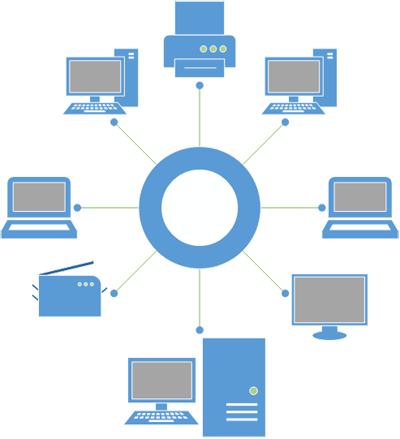 Star Topology
Star Topology
In a star topology, each workstation is connected directly to the server or hub. Excellence of the star topology is the existence of a separate cable for each workstation to the server, then the width of the bandwidth or communication lines in the cable will be more wide that will improve the overall network performance. When there is a disruption in the cable path interference will only occur in the communication between the workstation is concerned with the server, the network as a whole is not impaired. Drawback of the star topology is a need for larger cable than other topologies.
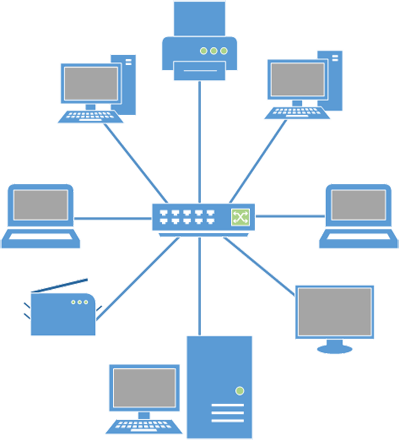 Topology Tree
Topology Tree
Tree topology can be a combination of a star topology with a bus topology.
 Mesh Topology
Mesh Topology
Mesh topology is used in conditions where there is no absolute cut off communication link between computer nodes. This topology reflects the design of the Internet that has multiple paths to various locations.
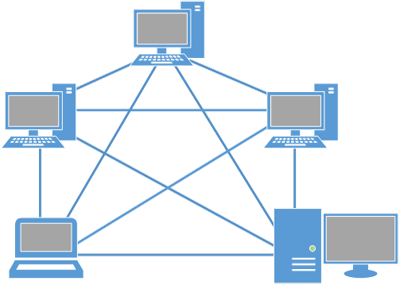
Network Devices
Network devices are all the computers, peripherals, interface cards, and additional devices connected to a network computer system to perform data communication. Umun devices contained in computer networks consists of:
Server
The server is the control center of the computer network. Servers serves to store information and to manage a computer network. The server will serve the entire client or workstation connected to the network. The operating system used on the server is a special operating system that can provide services for workstations.
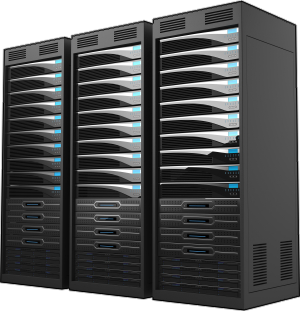 Workstation
Workstation
Workstation is a computer connected to a LAN. All computers connected to the network can be regarded as a workstation. The computers that access to the server to get the services that have been provided by the server.
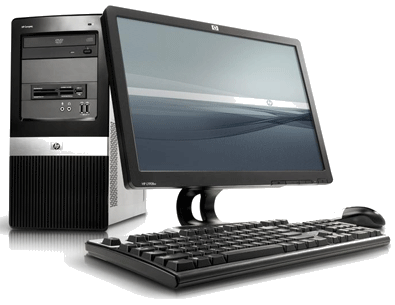 Network Interface Card
Network Interface Card
Network Interface Card (NIC) is an expansion board which institutions are used so that the computer can be connected to the network. Most NICs are designed for networks, protocols, and certain media. Commonly referred to as LAN NIC card. An example of a LAN card as shown in Figure

When viewed from the speed, Ethernet is divided into four types, namely as follows:
Cable is the connecting channel between two or more workstations. The types of cables used in networks among others, coaxial cable, fiber optic, and TWISED Pair
Coaxial cable has only one central conductor cable. This cable has a plastic coating that serves to limiting woven conductor with the existing wiring in the next layer. Coaxial cable has a transfer speed up to 10 Mbps. Coaxial cable is often used for cable TV, ARCnet, Ethernet thick and thin ethernet. Thick coaxial / 10Base5 / RG-8 is often used for the backbone network for inter-building installations. This cable is physically heavy and inflexible, but he was able to reach a distance of 500m or more. Thin coaxial / 10Base2 / RG-58 / cheapernet often used to network between workstations. This cable is physically easier to handle than RG-8 because it is more flexible and lighter. Thick coax has an average diameter of 12mm, while the thin coaxial having an average diameter of around 5mm. Every device connected to the BNC Tconnector. Fiber optic cable has a glass core that is protected by multiple protective apisan. Data transmission on the cable using light. Fiber optic cable has a greater distance than twisted pair and coaxial. This cable also has a data transfer rate is better in the delivery of data, reaching 155Mbps. Type of coaxial cable is now rarely used.
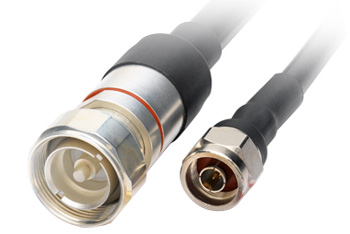 Fiber Optic Cables has two types, namely single mode and multi mode. Type of single mode cable has a diameter cores 9micron, while the multi-mode cable has a core diameter of 62.5 microns. Fiber optic cable is more often used because of the ability to transfer larger data, as well as cable reach far enough.
Fiber Optic Cables has two types, namely single mode and multi mode. Type of single mode cable has a diameter cores 9micron, while the multi-mode cable has a core diameter of 62.5 microns. Fiber optic cable is more often used because of the ability to transfer larger data, as well as cable reach far enough.
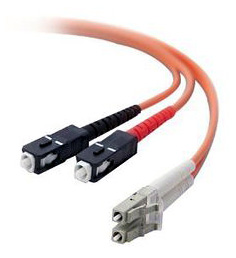 Twisted pair cables,
wires commonly used for local networks, it is generally divided into
two types, Shielded Twisted Pair (STP) and Unshielded Twisted Pair
(UTP). Pair cable in-twist (helical), the number of partners may consist of two, four or more. Twist function aims to reduce electromagnetic interference to other cable or to an external source. Data transfer speeds that can be served up to 10Mbps. Connectors are commonly used RJ-11 or RJ-45. Of the second type, the type of UTP is the type that is often used in a LAN network. UTP cable has four twisted pairs (8 wires fruit) and only 4 pieces of cable used in a network. Device with respect to the use of this type of cable is an RJ45 connector and Hub / Switch.
Twisted pair cables,
wires commonly used for local networks, it is generally divided into
two types, Shielded Twisted Pair (STP) and Unshielded Twisted Pair
(UTP). Pair cable in-twist (helical), the number of partners may consist of two, four or more. Twist function aims to reduce electromagnetic interference to other cable or to an external source. Data transfer speeds that can be served up to 10Mbps. Connectors are commonly used RJ-11 or RJ-45. Of the second type, the type of UTP is the type that is often used in a LAN network. UTP cable has four twisted pairs (8 wires fruit) and only 4 pieces of cable used in a network. Device with respect to the use of this type of cable is an RJ45 connector and Hub / Switch.
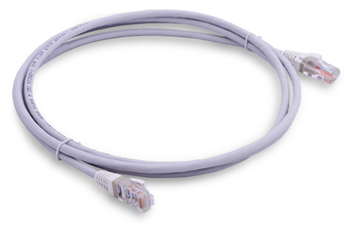 Hubs and Switches
Hubs and Switches
Switch is a device that also serves to connect multiple computers. Switch is physically the same as the hub but same logikalnya ranks brigde. Increased intelligence than a hub, which has a storage capability of the MAC address (Medium Access Control) or at the link layer of the OSI model so that only transmit data at the destination port (unicast). This is in contrast to a hub that sends the data to all ports (broadcast). The process works is that when the data packets arrive, the header is checked to determine in which segment the data packet destination. Then the data will be sent back (forwaded) to the destination segment.
 Bridge
Bridge
Bridge is a device that forwards traffic between network segments based on data link layer information. This segment has the same network layer address. Bridge work to identify the MAC address of origin which transmit data to the network and automatically builds an internal table. This table is used to specify the segment to which the packet will be routed and provides filtering capabilities. Bridge divide a single large network into several smaller networks. Bridge can also be used to connect them in a network that uses a different cable types or different topologies.
 Router
Router
A router is a device that serves to connect a LAN to an internetworking / WAN and manage the distribution of traffic data in it. The router will determine the best path for data communication. Routers work at the network layer of the OSI model to move packets between networks using logical addresses. Router's routing table exists at which register of all known network address and that may be passed along the path latency. The router works only if the network is configured protocol is routable protocols such as TCP / IP or IPX / SPX. This differs from the bridge that is protocol independent.
 Repeater
Repeater
Repeaters work at the level of the physical layer in the OSI network model. Repeaters regenerate or amplify charge signals are entered. On the ethernet data transmission quality can only survive in a range of time and a limited range, which further degraded. Repeater will try to maintain signal integrity and prevent degradation until the data packets to the destination. Weakness repeaters that can not filter network traffic. Data (bits) that goes into one port is sent out through all ports. The data will be scattered to the LAN segments regardless of whether the data is required or not.
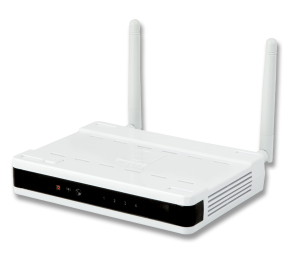 Modem
Modem
The modem is a device that is used as a connector from a PC or network to the Internet Service Provider (Internet Service Provider / ISP). One modem is used to connect to the internet is an ADSL modem. These modems are usually used by ISPs.
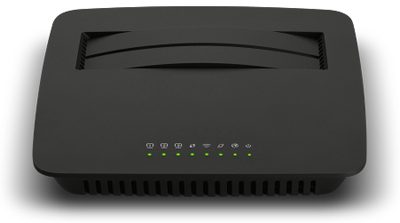
Also called the wireless network, is almost the same as does the cable network, only connections between hosts no longer use the cable medium. Usually wireless networks to connect one computer system to another system by using some kind of wireless transmission medium, such as radio waves, microwaves, or infrared light.
- Infrared is used for short distance communication, with a speed of 4 Mbps. In use for remote control, for example, the remote control at the television and other electronic devices.
- Data transmission using radio waves we are familiar with WiFi or WLAN.
Topology is a way to connect one computer to other computers to form a network. There are several topologies commonly used today, the bus topology, token-ring, star, tree, and mesh.
Bus Topology
In bus topology used a single cable or cable in the center where the entire workstations and servers connected. The advantages of a bus topology is the development of a network or adding new workstations can be done easily without disturbing other workstations. The drawback of this topology is that if there is interference in the cable along the center of the whole network will be impaired.

In ring topology, all workstations and servers are connected to form a loop or ring pattern. Each workstation or server will receive and pass information from one computer to another, if the addresses match then the information is received and when the information is not to be missed. Weakness of this topology is each node in the network will always follow and manage the information that is passed in the network, so that when there is a disturbance in a node then the entire network will be disrupted. The advantages of ring topology is not the collision or the collision of data transmission such as in a bus topology, since only one node can transmit data at a time.

In a star topology, each workstation is connected directly to the server or hub. Excellence of the star topology is the existence of a separate cable for each workstation to the server, then the width of the bandwidth or communication lines in the cable will be more wide that will improve the overall network performance. When there is a disruption in the cable path interference will only occur in the communication between the workstation is concerned with the server, the network as a whole is not impaired. Drawback of the star topology is a need for larger cable than other topologies.

Tree topology can be a combination of a star topology with a bus topology.

Mesh topology is used in conditions where there is no absolute cut off communication link between computer nodes. This topology reflects the design of the Internet that has multiple paths to various locations.

Network Devices
Network devices are all the computers, peripherals, interface cards, and additional devices connected to a network computer system to perform data communication. Umun devices contained in computer networks consists of:
Server
The server is the control center of the computer network. Servers serves to store information and to manage a computer network. The server will serve the entire client or workstation connected to the network. The operating system used on the server is a special operating system that can provide services for workstations.

Workstation is a computer connected to a LAN. All computers connected to the network can be regarded as a workstation. The computers that access to the server to get the services that have been provided by the server.

Network Interface Card (NIC) is an expansion board which institutions are used so that the computer can be connected to the network. Most NICs are designed for networks, protocols, and certain media. Commonly referred to as LAN NIC card. An example of a LAN card as shown in Figure

When viewed from the speed, Ethernet is divided into four types, namely as follows:
- 10 Mbit / sec, which is often referred to as Ethernet, the standard used: 10Base2, 10Base5, 10BaseT, 10Base-F.
- 100 Mbit / sec, which is often referred to as Fast Ethernet. Standards used: 100BaseFX, 100BaseT, 100BaseT4, 100BaseTX.
- 1000 Mbit / s or 1 Gbit / sec, which is often referred to as Gigabit Ethernet, standards used: 1000BaseCX, 1000BaseLX, 1000BaseSX, 1000BaseT.
- 10000 Mbit / s or 10 Gbit / sec, commonly called TenGig.
Cable is the connecting channel between two or more workstations. The types of cables used in networks among others, coaxial cable, fiber optic, and TWISED Pair
Coaxial cable has only one central conductor cable. This cable has a plastic coating that serves to limiting woven conductor with the existing wiring in the next layer. Coaxial cable has a transfer speed up to 10 Mbps. Coaxial cable is often used for cable TV, ARCnet, Ethernet thick and thin ethernet. Thick coaxial / 10Base5 / RG-8 is often used for the backbone network for inter-building installations. This cable is physically heavy and inflexible, but he was able to reach a distance of 500m or more. Thin coaxial / 10Base2 / RG-58 / cheapernet often used to network between workstations. This cable is physically easier to handle than RG-8 because it is more flexible and lighter. Thick coax has an average diameter of 12mm, while the thin coaxial having an average diameter of around 5mm. Every device connected to the BNC Tconnector. Fiber optic cable has a glass core that is protected by multiple protective apisan. Data transmission on the cable using light. Fiber optic cable has a greater distance than twisted pair and coaxial. This cable also has a data transfer rate is better in the delivery of data, reaching 155Mbps. Type of coaxial cable is now rarely used.



Switch is a device that also serves to connect multiple computers. Switch is physically the same as the hub but same logikalnya ranks brigde. Increased intelligence than a hub, which has a storage capability of the MAC address (Medium Access Control) or at the link layer of the OSI model so that only transmit data at the destination port (unicast). This is in contrast to a hub that sends the data to all ports (broadcast). The process works is that when the data packets arrive, the header is checked to determine in which segment the data packet destination. Then the data will be sent back (forwaded) to the destination segment.
- Unmanaged Switch, is the cheapest option and the type typically used in the office or small business and home. This computer network switches perform the basic functions of managing data traffic between printers or peripherals with one or more computers. This type of switch can not we manage manageable switch like that have extra features to apply, such as VLAN function.
- Managed Switches offer more advantages to having User Interface or offer software that allows users to configure the switch. The advantages offered ole switch types are able to segment the network with VLAN useful concept to provide more security to a network, Enables users to perform network traffic monitoring and maintenance.

Bridge is a device that forwards traffic between network segments based on data link layer information. This segment has the same network layer address. Bridge work to identify the MAC address of origin which transmit data to the network and automatically builds an internal table. This table is used to specify the segment to which the packet will be routed and provides filtering capabilities. Bridge divide a single large network into several smaller networks. Bridge can also be used to connect them in a network that uses a different cable types or different topologies.

A router is a device that serves to connect a LAN to an internetworking / WAN and manage the distribution of traffic data in it. The router will determine the best path for data communication. Routers work at the network layer of the OSI model to move packets between networks using logical addresses. Router's routing table exists at which register of all known network address and that may be passed along the path latency. The router works only if the network is configured protocol is routable protocols such as TCP / IP or IPX / SPX. This differs from the bridge that is protocol independent.

Repeaters work at the level of the physical layer in the OSI network model. Repeaters regenerate or amplify charge signals are entered. On the ethernet data transmission quality can only survive in a range of time and a limited range, which further degraded. Repeater will try to maintain signal integrity and prevent degradation until the data packets to the destination. Weakness repeaters that can not filter network traffic. Data (bits) that goes into one port is sent out through all ports. The data will be scattered to the LAN segments regardless of whether the data is required or not.

The modem is a device that is used as a connector from a PC or network to the Internet Service Provider (Internet Service Provider / ISP). One modem is used to connect to the internet is an ADSL modem. These modems are usually used by ISPs.

Bandwidth
Bandwidth is the amount of data or the volume of data in units of bits
per second that can be transmitted via a network transmission medium in
unit time. In general, the bandwidth can be analogous to a water pipe, and the data is that the water will pass through the pipeline. The greater the water pipe (bandwidth), the greater the volume of water (data) that can be passed. Adal some reason that makes bandwidth is one important factor in a computer network:
- Bandwidth plays an important role in determining the quality of a network due to the size of the data channel / bandwidth effect on the speed of data transmission.
- Bandwidth limitations due to physical laws and limitations of the technology. Each medium used to transmit the data separately certainly have limited maximum bandwidth that can be achieved.
- Bandwidth is not available for free. Bids bandwidth is most often encountered when we want to subscribe to the internet.
- Bandwidth requirements will always go up. With the new technology and refurbished network infrastructure, application and data requirements will also likely experience an increase in bandwidth usage.
No comments:
Post a Comment